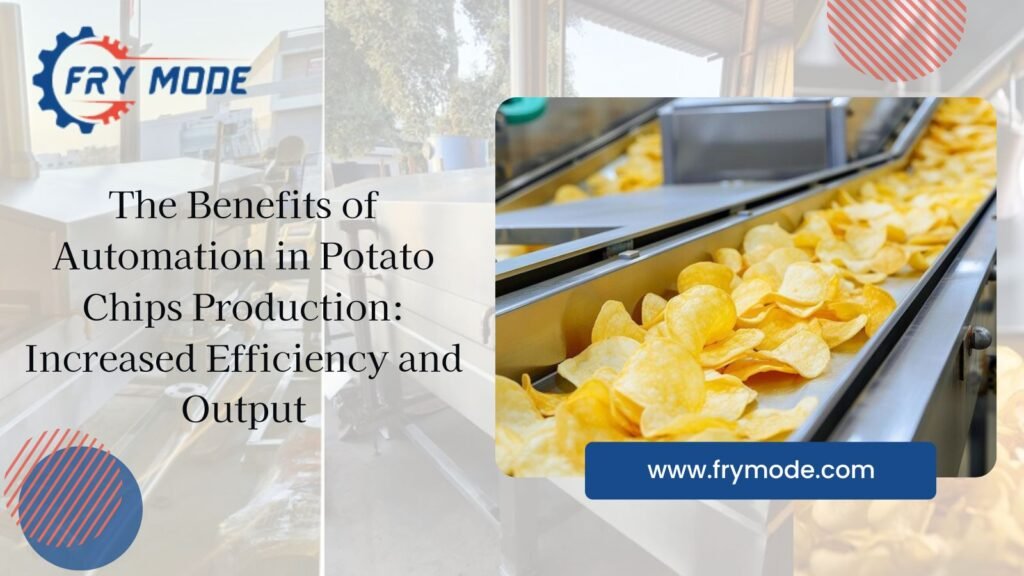The Benefits of Automation in Potato Chips Production: Increased Efficiency and Output
How Automated Systems Transform Snack Manufacturing

1. Introduction
2. Advantages of Automation in Potato Chips Production
Increased Efficiency and Speed
Streamlined Operations:
Automated systems seamlessly integrate every stage of production, reducing bottlenecks and ensuring a smooth workflow from start to finish. This allows for continuous, high-speed production, even during peak demand periods.Reduced Labor Dependency:
By automating repetitive tasks such as slicing, frying, and seasoning, companies can minimize labor costs and reduce human error. This not only speeds up the process but also frees up staff to focus on quality control and innovation.
Enhanced Product Consistency
Uniform Quality:
Automation ensures that each chip is processed under the same conditions, leading to uniform texture, color, and flavor. Consistent product quality builds brand trust and encourages repeat purchases.Precision Control:
Digital control systems enable precise regulation of temperature, timing, and seasoning application. This precision is critical for achieving the perfect chip every time, regardless of production volume.
Cost Savings and Improved ROI
Operational Cost Reduction:
While the initial investment in automation may be higher, the long-term savings are significant. Reduced labor costs, minimized waste, and optimized energy consumption contribute to a lower total cost of production.Scalability:
Automated systems are designed to grow with your business. Whether you’re running a small boutique operation or a full-scale industrial production line, automation allows you to easily scale up production without compromising quality.
Better Data and Process Control
Real-Time Monitoring:
Modern automated machines come equipped with sensors and digital dashboards that monitor every aspect of production. Real-time data allows for immediate adjustments, ensuring optimal performance and early detection of potential issues.Improved Decision Making:
Access to detailed production metrics empowers managers to make informed decisions about process improvements, resource allocation, and future investments.
3. Key Features of Automated Potato Chips Production Systems
Advanced Control Panels
User-Friendly Interface:
Digital control panels provide operators with intuitive interfaces for adjusting production parameters. This ease of use reduces training time and minimizes operational errors.Preset Programs:
Many automated systems offer preset programs tailored to different chip varieties and production needs, ensuring consistency and reducing setup time.
High-Capacity Equipment
Continuous Operation:
Automated machines are built for long hours of continuous operation, which is essential for high-volume production environments. This ensures you can meet large orders without experiencing downtime.Energy Efficiency:
Newer automated systems are designed to consume less energy while delivering powerful performance, resulting in lower operational costs and a smaller carbon footprint.
Integrated Quality Control
Consistent Quality Checks:
Integrated quality control systems monitor key metrics such as oil temperature, slice thickness, and seasoning levels. These checks ensure that every batch meets your brand’s standards.Automated Alerts:
Should any parameter fall out of the desired range, the system sends automated alerts for immediate intervention, preventing quality issues before they affect production.
4. Impact on Efficiency and Output
Implementing automation in your potato chips production line has a transformative impact on both efficiency and output:
Faster Turnaround Times:
Automated systems reduce the time required to process each batch, allowing you to produce more chips in less time. This increased throughput is critical during seasonal peaks or large-scale orders.Minimized Downtime:
With automated monitoring and maintenance alerts, machines operate more reliably, reducing unscheduled downtime and ensuring continuous production.Improved Resource Utilization:
Automation optimizes the use of raw materials and energy, reducing waste and lowering overall production costs. These efficiencies contribute directly to improved profit margins.
5. Return on Investment (ROI) and Long-Term Benefits
While the upfront cost of automation can be substantial, the return on investment is typically realized through:
Long-Term Cost Savings:
Savings in labor, energy, and materials add up over time, making automation a cost-effective investment.Enhanced Competitive Edge:
Consistent product quality and faster production times give your business a competitive advantage in the crowded snack market.Future-Proofing Your Business:
Automated systems offer scalability and adaptability, ensuring your production line remains efficient as consumer demand and market trends evolve.
Need Automatic Potato Chips Machine?
Enhance quality and consistency with Frymode’s Automatic Potato Chips Making Machine. Request a demo today!
